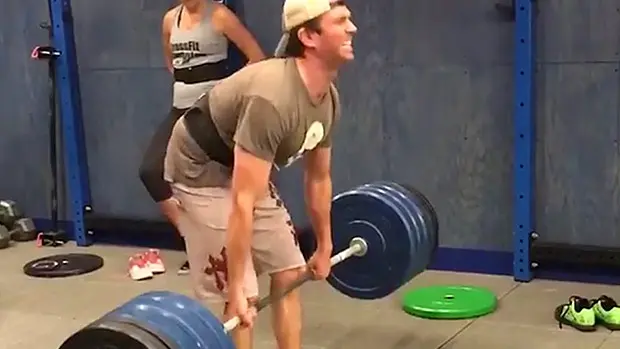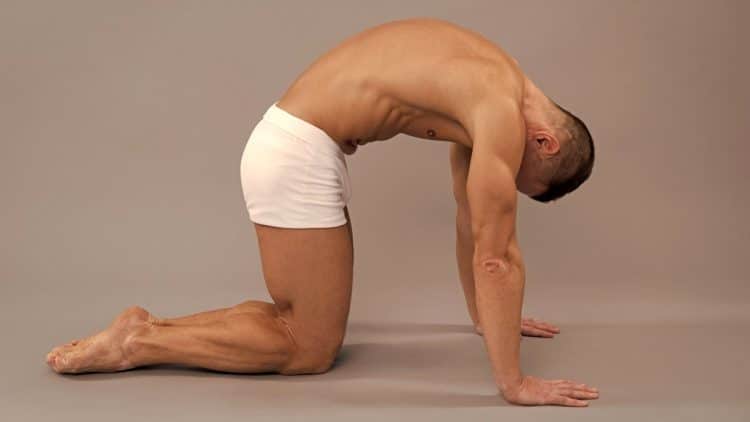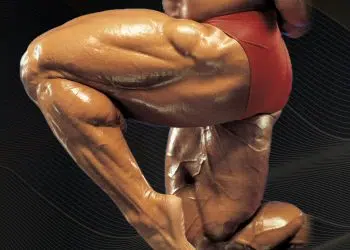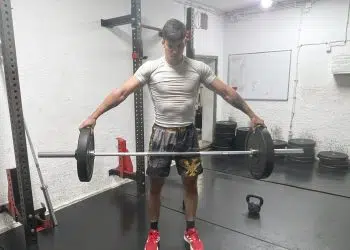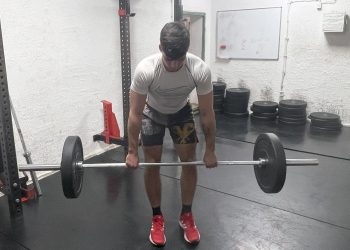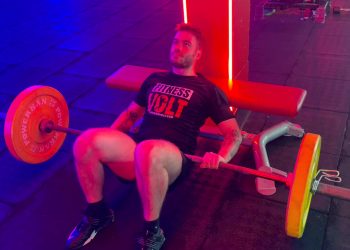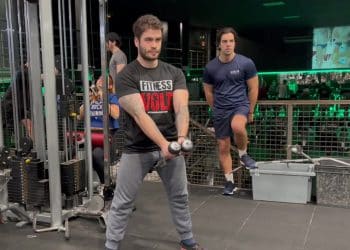Statistics suggest that eighty percent of adults experience back pain during their lifetimes (1). While many of these cases are mild and short-lived, some experience recurring, debilitating back pain. Back pain is the leading cause of disability, preventing many people from working. It’s the third most common reason for visits to the doctor’s office (2).
Lots of factors can lead to back pain, from being overweight to automobile accidents to occupational stress to pregnancy to poor posture. Physical activity can help make back pain less debilitating and may help prevent it in the first place.
However, many of the things we do in the gym can directly result in acute and chronic back pain. While you might be able to work around mild back soreness, severe back pain can stop you from walking, let alone going to the gym.
The good news is that you don’t have to suffer from lower back pain. As a veteran personal trainer with over 35 years of experience, I have helped several people turn areas of weakness into strengths.
In this article, I reveal some of the best lower back exercises you can do with cables.
Level Up Your Fitness: Join our 💪 strong community in Fitness Volt Newsletter. Get daily inspiration, expert-backed workouts, nutrition tips, the latest in strength sports, and the support you need to reach your goals. Subscribe for free! Recent Updates: On June 7, 2024, Fitness Volt’s Senior Editor, Vidur Saini (American Council on Exercise-CPT), updated the article and added actionable expert tips throughout the piece to improve the reader experience.
7 Best Lower Back Exercises with Cables
While there are plenty of free-weight and bodyweight lower back exercises you can do, cable exercises are also effective.
Using cables keeps your muscles under constant tension, and you can make small adjustments to the weight to ensure your back workout is effective but safe. You can also finetune your range of motion (ROM) to match your flexibility and mobility.
Here are seven of the best cable lower back exercises!
- Cable Stiff-Legged Deadlift
- Cable Zercher Good Morning
- Cable Pull-Through
- Seated Cable Back Extension
- Cable Side Bends
- Cable Bent-Over Row
- Side Plank Cable Row
1. Cable stiff-legged deadlift
| Sets & Reps | Equipment Needed | Target Muscles |
| 3-4 x 8-12 | Cable machine | Hamstrings, glutes, erector spinae (lower back) |
Most people are familiar with barbell stiff-legged deadlifts, but you can also do this with a cable machine. Cable stiff-legged deadlifts keep the target muscles under constant tension, making it a more effective exercise for some people.
“Actively stretch the hamstrings by pushing your hips back as far as possible while maintaining a neutral spine during the eccentric phase,” said Saini. The slow lowering phase can boost muscle gains and improve flexibility.
How to do it:
- Attach a bar or rope handle to a low pulley. Then, grab the handle, stand up, and take 1-2 steps back to engage the weights.
- Stand with your feet between shoulder and hip-width apart, knees slightly bent. Brace your core and pull your shoulders down and back.
- Push your butt back and hinge forward from your hips, extending your arms out in front of you. Do not round your lower back.
- Drive your hips forward and stand back up, tensing your glutes as you do so.
- Repeat for the desired number of repetitions.
Pro tip: Work one side at a time and train your lower back to resist rotation by doing single-leg cable stiff-legged deadlifts.
| Difficulty | Progression | Regression |
| Intermediate | Pause at the bottom of the movement | Single-leg variation, Romanian deadlift |
2. Cable Zercher good morning
| Sets & Reps | Equipment Needed | Target Muscles |
| 3-4 x 8-12 | Cable machine | Erector spinae, glutes, hamstrings |
A Zercher is any exercise where you hold a bar or weight in front of your abdomen in the crook of your arms. The cable Zercher good morning is an excellent lower back exercise that also trains your glutes and hamstrings.
Saini suggests bracing your abdominals as if you were about to be punched in the stomach while performing this exercise to minimize lower back strain.
How to do it:
- Attach a straight bar to a low cable machine. Hold the bar in the crooks of your arms. Bend your elbows and clasp your hands together in front of your chest. Take 1-2 steps back from the weight stack.
- Stand with your feet about hip-width apart, core braced, and knees slightly bent.
- Push your butt backward and hinge forward, leaning over as far as possible without rounding your lower back.
- Drive your hips forward, stand up, and repeat.
Pro tip: If Zerchers are uncomfortable on your arms and elbows, wrap the bar in a towel or use a squat back pad.
| Difficulty | Progression | Regression |
| Intermediate | Perform with a barbell instead of cable | Bodyweight good morning |
3. Cable pull-through
| Sets & Reps | Equipment Needed | Target Muscles |
| 3-4 x 10-15 | Cable machine | Glutes, hamstrings, erector spinae |
Powerlifters are known for their strong lower backs. The deadlift is classed as a test of back strength. They often use assistance or accessory exercises to shore up weaknesses and improve their powerlifting performance. The cable pull-though is a posterior chain exercise that can help strengthen your lower back.
“At the top of the movement, forcefully contract your glutes and drive your hips forward to achieve peak glute activation,” cues Saini.
How to do it:
- Attach a rope handle to a low pulley machine. Stand with your back to the weight stack, feet astride the handle.
- With your abs braced and shoulders down and back, bend down and grab the handle with both hands. Stand up and take a couple of steps forward.
- Stand with your feet shoulder-width apart, knees slightly bent, hands in front of your hips. This is your starting position.
- Push your hips back and lean forward until you feel a deep stretch in your hamstrings. Maintain a neutral spine throughout, including your upper back and neck.
- Drive your hips forward and stand back up.
- Hinge forward again and repeat.
Pro tip: Make this exercise more lower-back-centric by reaching back between your legs as far as your mobility allows. However, take care not to round your lower back.
| Difficulty | Progression | Regression |
| Beginner | Increase weight | Bodyweight hip thrust, glute bridge |
4. Seated cable back extension
| Sets & Reps | Equipment Needed | Target Muscles |
| 3-4 x 10-15 | Cable machine | Erector spinae |
The seated cable row is an excellent upper-back exercise, but you can use the same machine to work your lower back. Don’t be surprised if trainers at your gym come rushing to you to correct your form — this exercise looks a little unusual. Nonetheless, it’s a legit way to train your lower back.
Squeeze your middle and lower back before initiating the lifting phase. Avoid using momentum to maximize the gains.
How to do it:
- Attach a straight bar to a low cable row machine. Sit on the machine and hold the handle with a shoulder-width, overhand grip. Place your feet on the footrests and sit up tall, knees slightly bent, and arms extended in front of you.
- Moving from your hips, lean forward as far as your flexibility allows. Keep your chest up and your shoulders back throughout.
- Next, lean back until your body is straight.
- That’s one rep – keep going!
Pro tip: You can also do this exercise with a regular low pulley machine. Just sit on the floor with your legs straight and get to work! Use a mat for comfort if necessary.
| Difficulty | Progression | Regression |
| Beginner | Seated cable row | Hyperextension |
5. Cable side bends
| Sets & Reps | Equipment Needed | Target Muscles |
| 3 x 10-15 | Cable machine | Obliques, quadratus lumborum |
No, you haven’t accidentally wandered onto an article about oblique training! The back muscles don’t just extend your spine; they’re also involved in lateral flexion or bending you to the side. This exercise also hits the quadratus lumborum, a small but critical lower back muscle. However, you’ll also feel this one in your abs and obliques.
Instead of simply leaning sideways, imagine you are trying to bring your ribcage towards your hip on the contracting side, cues Saini.
How to do it:
- Attach a D-shaped handle to a low cable machine. Take the handle in one hand and stand sideways onto the weight stack. Take 1-2 steps away from the machine.
- Stand with your feet about shoulder-width apart, knees slightly bent. Brace your abs and pull your shoulders down and back.
- Lean sideways toward the machine as far as your flexibility allows.
- Return to the upright position and lean a few inches away from the machine to maximally engage your muscles.
- Repeat for the desired number of reps and then switch sides.
Pro tip: Avoid turning your hips or shoulders and making the exercise less effective by imagining that you are pressed between two panes of glass and can only lean sideways.
| Difficulty | Progression | Regression |
| Beginner | Use dumbbells | Bodyweight variation |
6. Cable bent-over row
| Sets & Reps | Equipment Needed | Target Muscles |
| 3-4 x 8-12 | Cable machine | Latissimus dorsi, rhomboids, biceps brachii, posterior deltoids |
Bent-over rows are usually considered an upper back and llats exercise. However, that bent-over position means your lower back also gets in on the action and will get stronger as a result. You can do bent-over rows with a barbell or dumbbells, but they’re often more comfortable with a cable machine.
“Focus on squeezing your shoulder blades together and retracting them towards your spine at the top of the row,” says Saini.
How to do it:
- Attach a straight bar to a low pulley machine. Hold the bar with an underhand grip. Step back and stand with your feet about hip-width apart.
- Lean forward from the hips and extend your arms. Pull your shoulders down and back, and brace your core. This is your starting position.
- Bend your arms and pull the bar into your abdomen. Keep your wrists straight, and make sure you lead with your elbows to maximize back engagement.
- Extend your arms and repeat.
Pro tip: Try doing this exercise with an overhand and a narrow grip to see if either option feels more comfortable or effective for you. You can also do this exercise with a single handle to work on anti-rotation of the spine.
| Difficulty | Progression | Regression |
| Intermediate | Perform single-arm variation | Inverted row |
7. Side plank cable row
| Sets & Reps | Equipment Needed | Target Muscles |
| 3 x 10-15 (each side) | Cable machine | Obliques, latissimus dorsi, transverse abdominis |
This is another of those exercises that many people assume are for your abs that also work your lower back. During side plank cable rows, you must use your back to hold you in a laterally flexed position and resist forward flexion and rotation. In short, it addresses every function of your lower (and upper) back in one movement.
This is a challenging exercise, so don’t go too heavy too soon. Instead, focus on maintaining perfect posture throughout.
How to do it:
Level Up Your Fitness: Join our 💪 strong community in Fitness Volt Newsletter. Get daily inspiration, expert-backed workouts, nutrition tips, the latest in strength sports, and the support you need to reach your goals. Subscribe for free!
- Lie on your side facing a low cable machine fitted with a D-shaped handle. Resting on your lowermost arm, lift your body to form a straight line. Take the handle in your free hand.
- Keeping your core tight and body straight, row the handle into your side. Do not allow your hips or shoulders to move out of alignment.
- Extend your arm and repeat.
- Rest and then do the same number of reps on the opposite side.
Pro tip: Rest your lowermost arm on a folded gym mat or foam pad for comfort. Tense your legs and glutes to maximize core and lower back muscle engagement.
| Difficulty | Progression | Regression |
| Intermediate | Increase weight, add rotation | Side plank (hold), kneeling side plank row |
Best Cable Lower Back Workout
Perform this workout once weekly for the best results:
| Exercise | Sets | Reps | Rest (seconds) |
| Cable Stiff-Legged Deadlift | 3 | 8-12 | 60-90 |
| Cable Pull-Through | 3 | 10-15 | 60-90 |
| Cable Bent-Over Row | 3 | 8-12 | 60-90 |
| Seated Cable Back Extension | 3 | 10-15 | 45-60 |
| Cable Side Bends | 3 | 10-15 | 45-60 |
Lower Back Anatomy
The main muscles of the lower back are:

Erector spinae
Erector spinae is the collective name for the muscles that run from the bottom to the top of your spine: spinalis, longissimus, and iliocostalis. They’re responsible for extending your spine and play a part in lateral flexion. When they contract isometrically or statically, the erector spinae hold your spine upright and prevent it from rounding.
Quadratus lumborum
QL is a deep back muscle that runs from the top of your pelvis to your lower ribs and along the lumbar vertebrae on both sides of your spine. Its functions include lateral flexion and extension of your spine, and it is also a critical back stabilizer.
To be considered a lower back exercise, the erector spinae and QL muscles must be actively involved. However, these muscles seldom function in isolation. The other muscles that invariably work alongside the erector spinae include:
Gluteus maximus
This is the largest muscle in the human. The glutes are a powerful hip extender and are also involved in the abduction and external rotation of your hip. Most lower back exercises involve at least some hip movement and glute activation.
Hamstrings
Located on the back of your thighs, the hamstrings work with your glutes to extend your hips and also flex your knees. The three hamstring muscles are the biceps femoris, semimembranosus, and semitendinosus.
Core
This is the collective name for the muscles of your midsection, namely the rectus abdominis, obliques, and transverse abdominis. The core muscles contract inward to generate intra-abdominal pressure, which helps support and stabilize your lumbar spine.
It’s all but impossible to isolate your lower back muscles, but that’s probably a good thing. In most everyday tasks, gym exercises, and sporting endeavors, these muscles work with the rest of your body, so it makes sense to train them the same way.
For that reason, the exercises in this article don’t just work your lower back but also train your hips and core.
Why Train Your Lower Back?
When it comes to back training, most people tend to emphasize their lats, traps, and rhomboids. That’s not really surprising, given that these muscles have a significant impact on your appearance.
However, when it comes to function, performance, and health, it’s the lower back that’s arguably the most important.
That’s because almost every human movement involves your lower back. It’s only when you experience back pain for yourself that you realize how integral your lower back is.
Reasons to pay more attention to your lower back strength include:
Fewer lower back aches and pains
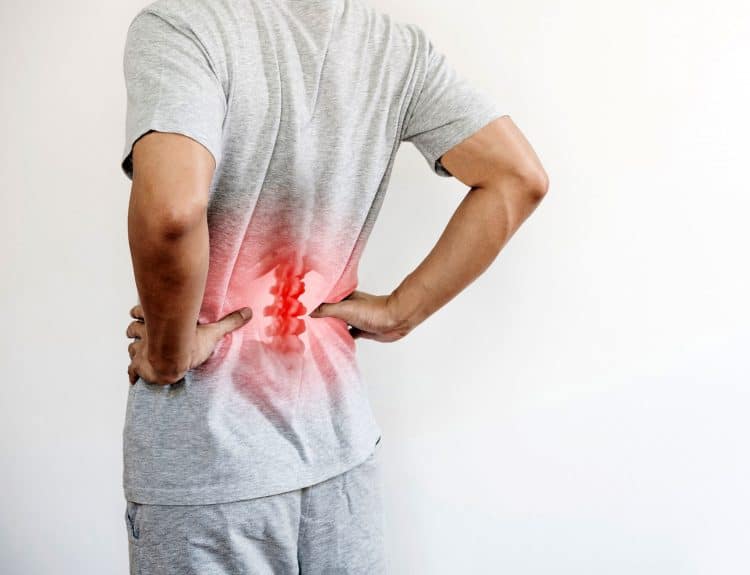
While you might not be able to avoid back pain entirely, you should be able to reduce your risk by strengthening the associated muscles. After all, strong muscles are more resilient and less likely to be injured when overloaded, e.g., when carrying your groceries or lifting a child or pet.
Better posture
Poor posture is a leading cause of lower back pain. Posture refers to the alignment of your joints. Prolonged sitting causes your hips to tighten and your lower back to weaken. A lot of people look like they are sitting down even when standing, as their backs are rounded, and their heads jut forward, aka “nerd neck.”
Cable lower back strengthening exercises can help pull you upright against the force of gravity and put you into better posture. Better posture means less stress on your lower back.
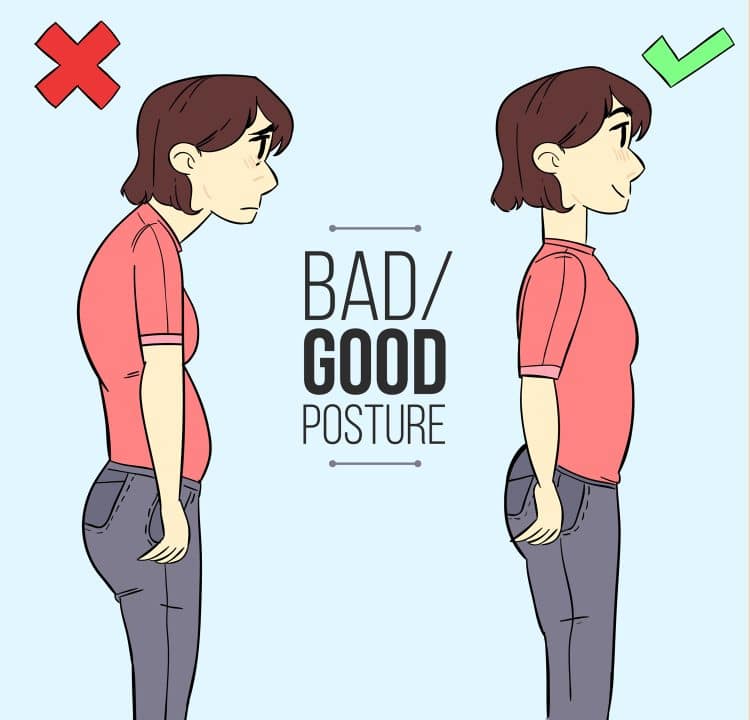
Better muscular development and aesthetics
Just because you can’t see your lower back in the mirror doesn’t mean it’s not on show! A well-developed lower back can add a lot to your appearance. Look at a ripped bodybuilder’s lower back — they often have an impressive “Christmas tree” at the base of their spines. You could have one, too, if you train hard enough and drop some body fat!
Improved function and exercise performance
A chain is only as strong as its weakest link, and for a lot of lifters, that weak link is their lower back. So, for example, if your lower back rounds during squats, deadlifts, or bent-over rows, the associated muscles are probably weak, and strengthening them will improve your lifting performance.
So, if you want to squat, deadlift, or row more weight or do more reps, you must beef up your lower back!
FAQ
How often should I train my lower back with cables?
Muscles only get stronger as you rest between workouts. So, you should train your lower back 2-3 times per week, and preferably not on consecutive days, i.e., Monday, Wednesday, and Friday, or Tuesday and Saturday.
What training split is best for training the lower back?
You can train your lower back after you’ve worked your upper body, after your legs, or on a separate day. However, you should generally leave working your lower back until the end of your workout. That way, tired back muscles won’t compromise your performance of any other exercises you plan to do.
For example, it would be a terrible idea to train your lower back before squats, deadlifts, or bent-over rows.
Do I need to stretch my lower back as well as strengthen it?
Stretching is every bit as important as strengthening for a healthy lower back. If your back muscles are tight, you may suffer backache and are more likely to pull and injure a back muscle. You should try and stretch your back most days, especially if you spend a lot of time sitting.
Here’s a guide on how to stretch your lower back.
Should I train my lower back to failure?
While it’s perfectly okay to train some muscles to failure and even beyond, it’s not a good idea with your lower back. Training to failure will leave your back muscles feeling weak and tired, but you’ll still need to use them to support your spine once you leave the gym. If they are too fatigued, they may not be able to fulfill this role effectively.
So, when it comes to lower back training, it’s generally best to stop your set 2-5 reps shy of failure to avoid completely exhausting your muscles. However, your workout will still be effective.
How can I train my lower back at home?
The best way to train your lower back at home is with resistance bands or bodyweight exercises. You can use a set of resistance bands to replicate all of the cable lower back exercises presented in this article. Good bodyweight lower back exercises include:
Wrapping Up
The lower back is a lagging muscle group for many people — both functionally and aesthetically. Too much time spent sitting, and general physical inactivity, means that this part of the body often does not get enough work.
While working out can help, some exercises actually compound the problem by providing loads of back support, such as leg presses, seated shoulder and chest presses, and recumbent bikes.
So, if you want a stronger lower back, you’re going to have to work for it, either by lifting barbells, doing bodyweight exercises, or using a cable machine.
References:
1– PubMed: The Rising Prevalence of Chronic Low Back Pain https://www.ncbi.nlm.nih.gov/pmc/articles/PMC4339077/
2– American Chiropractic Association: Back Pain Facts and Statistics https://www.ncbi.nlm.nih.gov/pmc/articles/PMC4339077/
Interested in measuring your progress? Check out our strength standards for Zercher Squat, Good Morning, Stiff Leg Deadlift, and more.

